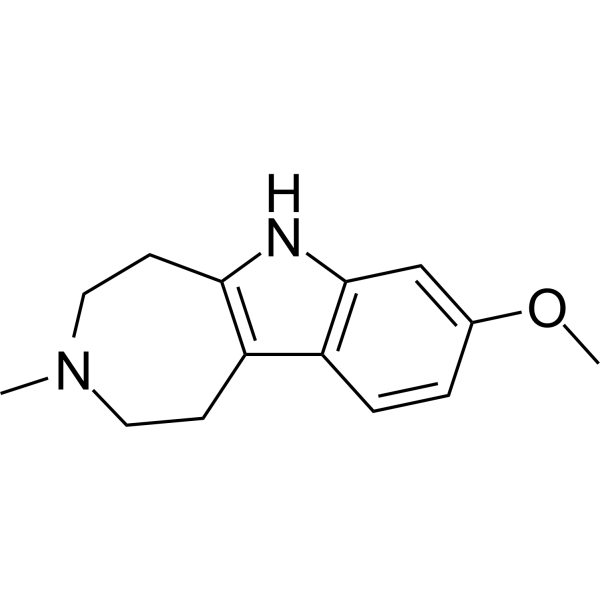2483829-58-7
| Name | Tabernanthalog |
|---|
| Description | Tabernanthalog is a water-soluble, non-hallucinogenic and non-toxic analogue of ibogaine. Tabernanthalog is a 5-HT2A agonist. Tabernanthalog is found to promote structural neural plasticity, reduce alcohol- and heroin-seeking behaviour, and produce antidepressant-like effects in rodents[1]. |
|---|---|
| Related Catalog | |
| Target |
IC50: 148 μM (hERG channels expressed in HEK293 cells)[1] |
| In Vitro | Tabernanthalog (0.1-100 μM) shows inhibition to hERG channels expressed in HEK293 cells with an IC50 value of 148 μM[1]. Tabernanthalog (0.001 nM-100 μM) demonstrats potent agonist activity for human and mouse 5-HT2A receptors[1]. |
| In Vivo | Tabernanthalog (10 and 50 mg/kg; i.p. once) shows no hallucinogenic effect in mouse head-twitch response assays[1]. Tabernanthalog (50 mg/kg; i.p. once) promotes structural neural plasticity in vivo[1]. Tabernanthalog (10 and 50 mg/kg; i.p. once) reduces the amount of time spent immobile after stress in a forced swim test of mice[1]. Tabernanthalog (50 mg/kg; i.p. once) selectively reduces alcohol intake[1]. Tabernanthalog (40 mg/kg; i.p. once) acutely reduces heroin-seeking behaviour in a rat model of heroin self-administration[1]. Animal Model: Male and female C57BL/6J mice[1] Dosage: 10 and 50 mg/kg Administration: Intraperitoneal injection; 10 and 50 mg/kg once Result: Showed nogenic potential in mouse head-twitch response assays. Animal Model: Anaesthetized male and female Thy1-GFP-M line mice with ketamine and xylazine injection[1] Dosage: 50 mg/kg Administration: Intraperitoneal injection; 50 mg/kg, once, after mice recovered from the anaesthesia of the first imaging session Result: Increased dendritic arbor complexity, dendritic spine density and spine formation but showed no effect on spine formation. Animal Model: Male C57/BL6J mice with alcohol-drinking for 7 weeks[1] Dosage: 50 mg/kg Administration: Intraperitoneal injection; 50 mg/kg, once, 3 h before the beginning of a drinking session Result: Reduced the alcohol consumption for at least 2 days after the administration. |
| Molecular Formula | C14H18N2O |
|---|---|
| Molecular Weight | 230.31 |
